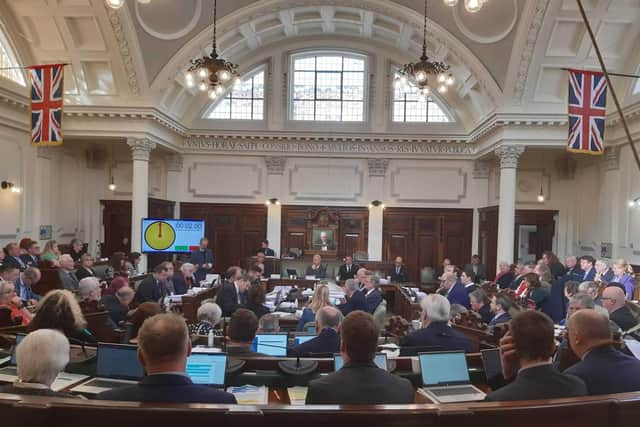Council presses for action over crustacean deaths on Yorkshire coastline
North Yorkshire County Council leader Councillor Carl Les said he would also “follow up” concerns raised by opposition elected members of the authority over the availability of compensation for fishermen from Staithes to south of Filey who had been affected by crab, lobster and more recently prawn die-offs.
The pledge follows councillors pressing the authority to lobby the government for more action over the die-offs, which have affected fishing catches since autumn 2021, significantly impacting on the county’s fishing industry.
Advertisement
Hide AdAdvertisement
Hide AdA full meeting of the authority heard while initial government investigations concluded the die-offs could have been triggered by an algal bloom, a study by the North East Fishing Collective and researchers at the universities of York, Newcastle and Durham and Hull had concluded an industrial chemical, pyridine, was a more likely cause.


Another study, commissioned by the government, has concluded both pyridine and capital dredging on the Tees, were unlikely to be the reason for the die-offs.
Councillor Steve Mason said measures needed to be taken to ensure North Yorkshire’s coastlines are protected from pollution that could have serious implications for wildlife, tourism and the economy.
The meeting heard several councillors highlight how communities along the coast were suffering the financial fall-out and while the prospect of further die-offs was proving to be unsettling.
Advertisement
Hide AdAdvertisement
Hide AdCouncillor Andy Brown said: “I think we are at risk of letting down our fishing communities and potentially our tourist industry. Nobody minds economic development in Teesside, but a rushed freeport seems to have created some risks that were not foreseen.
“We were first told the die-off was due to an algal bloom that nobody had ever seen, that’s now been shown not to be true. The supposedly independent report then told us that there was some unknown disease that had never been spotted that was the cause of it.
“We still need an answer. If it happens again that’s people’s livelihoods.”
Councillors representing coastal communities told the meeting although the government had promised compensation for fishermen it was unclear where it could be accessed.
Advertisement
Hide AdAdvertisement
Hide AdFiley councillor Sam Cross said: “It affects the whole coast. It doesn’t just affect Scarborough and Whitby. Something needs to be done.”
Coun Les said the authority was continuing to monitor the crustacean mortality issue affecting the the county and said the council was the joint biggest funder of the North East Inshore Fisheries and Conservation Authority.
He said while he wanted action to follow the scientific findings over the issue, at the moment “the science doesn’t agree with itself” and that there would need to be a further incident before more investigation could take place, but had asked for the Centre for Ecology, Fisheries and Aquaculture Science investigations to be promptly launched if a similar event happens.
Coun Les said he had written to the Secretary of State highlighting the importance of the high quality natural environment of the North Yorkshire coast for wildlife, tourism and in supporting key aspects of the local economy including the fishing industry, and asking that further investigations are carried out.
He added: “This is a hugely important issue for us on the coast.”